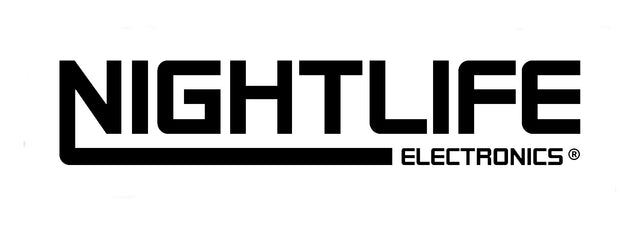Regular price CAD$549.00
The Zero Point Oscillator is not your typical analog VCO or even your standard Thru-Zero FM VCO for that matter.
The core of the ZPO was developed through countless hours of experimentation involving Through-Zero modulation techniques.
Through-Zero FM is a form of frequency modulation that produces much deeper and useful FM tones than a typical VCO can accomplish.
New techniques have been discovered that not only improve the performance of TZFM, but also grant additional benefits as will be explained.
The Fusion of Frequency and Amplitude Modulation:
The ZPO's modulation section is a hybrid involving both TZFM (frequency modulation) and TZAM (amplitude modulation). Coupling these two techniques substantially expands the performance and tonal shaping possibilities, beyond traditional TZFM. The results are more stable and balanced across the modulation bandwidth and both TZFM and TZAM can function together or independently, and anywhere in between.
How Thru-Zero (TZ) FM works on the ZPO:
While typical VCO frequency modulation works by increasing the oscillator frequency as the modulation source goes positive and decreasing the frequency while going negative, TZFM works by rectifying (ie flipping) the negative polarity portion of the modulation source into the positive region. You can read up on “Full Wave Rectification” to help visualize this concept. This keeps the modulation source voltage 100% positive and effectively doubles the rate of modulation.
To fully realize the TZFM sound, the carrier VCO must also reverse direction of oscillation to simulate the requirement of going 'backwards in time' – this is merely a mathematical conundrum as it is quite analogous to simply reversing the wave-form’s polarity.
There have been many techniques for accomplishing this aspect of TZFM, including various VCO core types, and direction-switching techniques.
The ZPO utilizes a new technique involving a tuned TZ Amplifier to accomplish this task. When applying audio rate modulation, the effect is indistinguishable from traditional TZFM with a number of added benefits, including but not limited to, more increased modulation stability, wider range of usable modulation rates, and a much broader range of tonal possibilities using the Zero Point Control.
When the TZ-MOD switch is in the active, LIN, EXP or ALL position, The applied modulation is routed to both the signal rectifier into the VCO core and the Zero Point TZ Amplifier.
The Zero Point control will then offset the balance of polarity reversal, producing an auditory change in the tonal balance of the TZ modulated waveform:
TZFM will be fully balanced when Zero Point Control is centered (ie Zero Point = 0 Volts) and will be offset as the ZP control position is altered. , The TZ Amplitude modulation depth will decrease in intensity as the control approaches the +/- extremes and cease altogether at those extremes.
The effect is dependent upon choice of modulation waveform, output waveform and depth (attenuation) of modulation, but overall similar to a combination of Phase Modulation and PWM and is essentially a built in Dynamic Depth Control.
Dynamic Depth of TZFM on the ZPO:
Dynamic depth implies that the modulation source amount be varied over time. This is desired on TZ VCOs because it produces a more natural FM effect when synthesizing metallic and bell-type sounds, for instance, and more expressive modulation in general.
Traditional TZ VCO's would include a CV Input VCA for the FM input, so that an envelope can be applied to modulate the FM depth.
Since the ZPO's TZFM technique utilizes a TZ VCA, this function is actually already built into the ZPO's Zero Point Control and can be modulated with an Envelope or VCO/LFO via the ZERO-P (Zero Point CV) input.
WAVE SHAPING
Three wave-shaping outputs are provided and described below:
WAVE A and WAVE B:
In addition to the 8 direct waveform outputs on the ZPO, two more variable wave-shape outputs are provided on either side of the module. These outputs with associated Control and CV inputs are independent but identical feature-wise.
The controls smoothly fade from Pulse to Saw to Triangle to inverted Sine. Therefore, various hybrid wave shapes can be achieved by setting the WAVE controls in between the standard wave settings on the WAVE controls.
The two WAVE outputs can be used separately or together in pseudo stereo operation.
Why Inverted SINE?
Through development of the ZPO and in use, we found that the crossover from TRI to SINE on the WAVE A/B outputs was a bit underwhelming in itself and when creating even more complex wave-shapes using the MORPH control (described below). Simply stated, Inverted SINE produces more interesting subtractive wave-shapes and vibrato/tremolo effects when mixed with the other wave forms.
MORPH:
MORPH is the focal point of the wave-shaping functions of the ZPO and works in conjunction with the WAVE A/B controls.
Morph offers a finer and wider control over waveform mixing and allows any of the wave shapes selected by WAVE A/B to be morphed together in various degrees.
This will have a major effect on harmonic content as a wide variety of atypical wave shapes can be created.
As mentioned, the Inverted SINE allows for even more wave-shaping possibilities since the inversion will subtract various levels of the fundamental from whichever wave shape it is being mixed with via MORPH.
Modulating WAVE A/B and MORPH:
The CV inputs for WAVE A/B and MORPH allow dynamic automated control over the wave-shaping parameters. While slower modulation applied to these inputs produce more subtle interpolation effects, audio rate modulation can also be utilized for an even greater degree of animated and non-standard wave shaping.
When combined with the FM and AM functionality, the ZPO is capable of creating a truly staggering variety of tones, all within a single VCO. We recommend pairing the ZPO with a stable VCO/LFO or even a second ZPO for a truly unique complex oscillator experience.
- Width: 19HP
- Depth: 32mm
- Power: 147mA @ +12V / 141mA @ -12V

